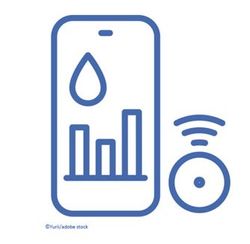Proactive Intervention: Strategies for Slowing Type 1 Diabetes Progression - Episode 4
Consequences of Delaying Intervention in Stage 2 T1D
Panelists discuss how delaying intervention in stage 2 type 1 diabetes, when dysglycemia is present but clinical symptoms have not yet developed, can lead to further ß-cell deterioration and worsen long-term glycemic control, ultimately increasing the risk of complications.
The following Frontline Insights manuscript has been edited for clarity and length.
Javier Morales.MD: Let’s hear from the audience: What do you perceive as the consequences of delaying intervention in stage 2 type 1 diabetes? Select all that apply:
A: Increased risk of progression to stage 3 type 1 diabetes.
B: Elevated likelihood of developing complications such as diabetic ketoacidosis (DKA).
C: Impact on patient quality of life due to uncontrolled blood sugar levels.
D: Potential for irreversible damage to pancreatic beta cells.
E: Other.
Please cast your votes. It seems the consensus is that A, B, C, and D are all correct. But I’d like to ask the panel: Is there another potential consequence of delaying intervention that isn’t listed here? Abha, your thoughts?
Abha Choudhary, MD: Early intervention reduces the need for more invasive treatments, such as insulin therapy, and contributes to a better quality of life for patients.
Morales: That’s an excellent point. Another major consequence is the strain on the healthcare system. Delayed diagnosis and intervention often result in patients presenting with life-threatening conditions requiring intensive care, such as DKA. These scenarios drive up healthcare costs and resources. Natalie, could you elaborate on stage 3 type 1 diabetes and the consequences of delayed intervention?
Natalie Bellini, DNP, FNP-BC, BC-ADM, CDCES: Absolutely. First, it’s important to recognize that the staging of type 1 diabetes is a relatively recent development, introduced in Diabetes Care in 2015. Many of us are familiar with the staging graph, which has become a staple in presentations and educational resources. Breakthrough T1D has excellent materials for understanding these stages.
When staging was first introduced, there were limited options for disease prevention or intervention. At that time, we didn’t even have data showing a reduction in DKA through earlier detection. Today, however, we have tools and FDA-approved therapies that allow us to intervene earlier, particularly in stage 2, and significantly improve patient outcomes.
Intervening at stage 2 can soften the progression to stage 3. Early identification of rising glucose levels—using tools like blood glucose meters or continuous glucose monitors—enables timely intervention. Emerging therapies can delay the onset of stage 3, preserving beta-cell function for longer. This is critical because once beta cells are destroyed, they cannot regenerate, unlike liver cells that can regrow after donation.
Delaying intervention increases the risk of severe complications, including DKA. DKA is life-threatening and has a long-term impact on glucose control. Patients diagnosed during DKA often have a more challenging trajectory of managing blood glucose levels throughout their lives. This underscores the importance of catching the disease in earlier stages, when treatments are more effective.
The ADA remains cautious in updating clinical guidelines, only doing so when evidence strongly supports new recommendations. Their endorsement of these staging and intervention strategies highlights the clinical importance of early detection and management.
Morales: That’s a crucial point. DKA represents a significant metabolic crisis. When patients present with DKA, they often require immediate hospitalization and intensive care. Beyond the acute risks, the long-term implications for glucose control and overall health are profound.


